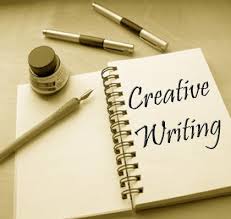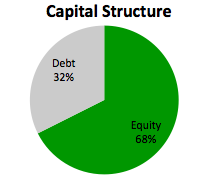Introduction
To study creative writing is to study the science of observation, of thinking, of evolution and of empathy.
Through Creative Writing we have:
• Enhanced our writing skills
• Expanded our imagination
• Learnt how to write from our experiences
• Find our own unique style
• Harness the use of our senses
Source Book
We must keep our experiences sorted on the basis of sensory perception as there is a strong link between our senses and memory. However, if this method of classification doesn’t suit you, one may even sort by nature of experience- happy, sad, angry, etc.
The source book must always be kept close at hand so that we may be able to jot down anything of note that happens to us. Even if something seems routine and like an everyday occurrence, you should write it down because you never know when some day that memory may serve you in a piece that you’re writing.
Dreams
What is it that makes a dream a dream? What makes a dream?
A story in which you are an important player is a dream. It may or may not be complete. It has logic of its own. A dreamscape is the area of our subconscious where dreams occur- is a very powerful writing tool. Apart from serving as a source for inspiration, a dream sequence can also serve to address certain issues in a narrative (flashbacks that may not be able to be represented linearly or without context) and, very often, the illogical yet cohesive sequence of events that occur within a dream can, by itself, provide a compelling narrative.
Fiction & Stream of Consciousness
William Mc. Peace Thakrey’s ‘Vanity Fair’
Psychological novels evolved after scientific advancements forcing man to look inwards thus giving birth to the stream of consciousness. Writers like Verginya wolf and Marcel proust are good examples.
Orientalism- John Master’s The lotus & the wind
‘Incident at Owl’s Creek’ which later on inspired the movie ‘Stay’. ‘Incident at Owl’s Creek’ was a short story about a confederate soldier (during the American Civil war of 1863-1865) who day dreams about escaping his execution seconds before he is hung below the bridge.
How to be convincing as a writer: Make your readers feel the same way you do. A good story has
- Character- the element that drives the story ahead
- Plot- the frame work
- Action Trigger- the main theme (the mood)
A good story also has ‘the hook’. It is simply the essence of the story the writer has to convey. It has-
- A thought
- An experience
- A feeling
- An opinion
- A crisis
- A discovery
- A realization
Reality
Felt and experienced reality. A few pointers to achieve reality-
- Be specific
- Be human
- Bring alive
- Never judge
Presentation of facts in a colourful way in a way that the reader wants to read it is called non- fiction
Written works
You cannot build a sky scarper without having seen the best of them and you cannot write without having read the works of established craftsmen. With that thought in mind, we read the works of famous authors such as Peter Carrey and Hunter Thompson. The study that followed was neat and exposed many of the tricks they had to their credit. Through the process of reading the works of Hunter Thompson, we also entered the era of new journalism and worked on pieces of new journalism as well.
- Peter Carey- conversations with unicorns (Fantasy writer dealing with death, war, immortality)
- Hunter.S.Thompson – Songs of the doomed (Social and psychological encounters)
Writers who defied contemporary writing- Jack Karouk, Gregory Korso, Lawrence Feengeti, Allens Ginsberg.
Few pointers-
- Use words that express what you want to express in a direct way. Don’t use words that take away from the meaning.
- The length of a sentence depends on the mood you want to create
- Generally short sentences are used to convey more emotional expression and longer sentences for description/reflection or quiet moods.
Aspects of a Character
Round Character VS Flat Character
Round Characters are more human in nature as their feelings and emotions adapt to their situations whereas Flat Characters have static personalities and are often used as personifications for society and ideals.
Setting and Circumstance
|
Setting |
Circumstance |
| Time | Character driven |
| Physical state | Physical state |
| Mental State | Chemistry |
Get introduced to concept of plot, sub plot, situations, circumstances etc that govern stories, novels etc. Get a deep insight on how all these factors influence and make a story. All these factors help the writer to create a picture in the minds of the readers and how all these instruments should be used carefully to draft a story that leaves a lasting impact on the readers.
- While writing a short story:
- Focus on the essence of your story.
- When in doubt, cut it out.
- A story is driven by action and should move in sequence.
- Don’t dwell and over-reflect.
- It should have a natural flow.
A story should unfold and not be told
Opening & Closing
Openings can start with action, a situation being portrayed, or with expressed thought/feeling. Closures or endings can be open ended where the reader is left ‘cheated’ of a conclusive answer and the end is open to any interpretation, there can also be the doorway ending where the writer creates a doorway for the story to continue in the form of a sequel, there are several other ways to end like the ‘Karmic’ end, the circle ending, the well known tragic ending.
The Opening of a Story –
1. Action – Describes exactly what’s happening.
2. Situation – Describes the scenario in which the story is taking place.
3. Expressed Thought/Feeling
The Closing of a Story –
1. Circle – An ending that comes full circle.
2. Doorway – An ending that has the potential to lead elsewhere.
3. Realization – The protagonist realizes something he’s missed.
4. A Karmic Ending – Everyone gets what’s coming to them.
Dialog
Dialog is the essence of good story writing, dialog adds drama and excitement to the story, it creates depth in the story and makes it stand out, it involves the reader and gives you and objective but first person view in the story.
Dialogue is a very powerful tool in a story. It can serve to add value to the ongoing plot of a story, but it can also serve to take the narrative in a completely new direction. The mark of a good writer lies in his ability to write compelling, yet convincing, dialogue. Characters within a story can be developed through dialogue alone if the author is skilled enough and, sometimes, the dialogue provides chemistry between players in a narrative. Dialogue must be realistic and give the reader a vista to connect with the characters in a story.
So in simple words, dialogue –
1. Helps readers connect to the story.
2. It adds Drama.
3. Gives you a feel of the characters.
4. Helps you engage with the character.
5. It helps to drive the story onwards.
Methods of Depicting Dialog
- Traditional method- Quotation marks
- Modern method- Sans Quotation Marks
- Italics
- Throwing in words in the course of action
Click here for government certification in Media





10 Comments. Leave new
Excellent article..!
Quite briefly written…nice
Nice article
nice work
Wow! Thats an excellent explanation.. Its very helpful for people like me who wants to be a writer.. Thank You so much 🙂
Hey its very nice and helpful to enhance our writing skills 🙂
Well explained with good points
Amazing post 🙂
The content as well as the presentation . Both .. 😀
Keep it up buddy 😀
very well explained 🙂
keep up the good work 🙂
Great work.. Everything has been presented and explained well..